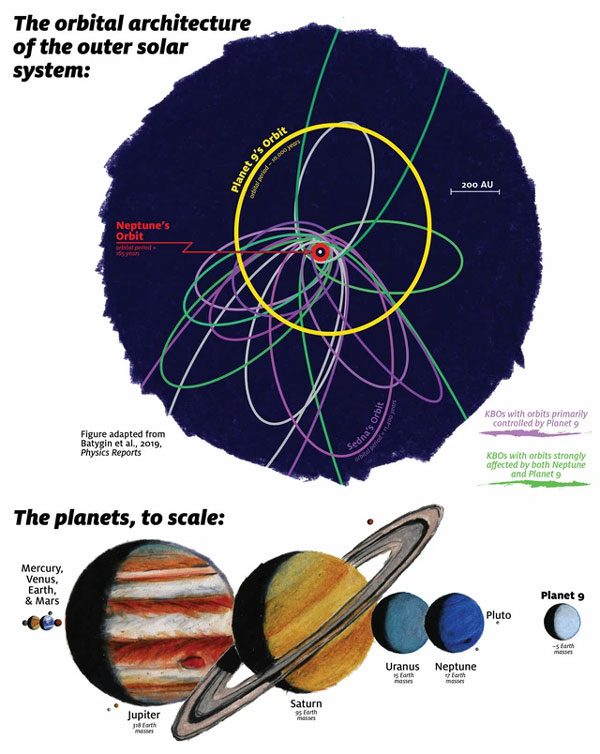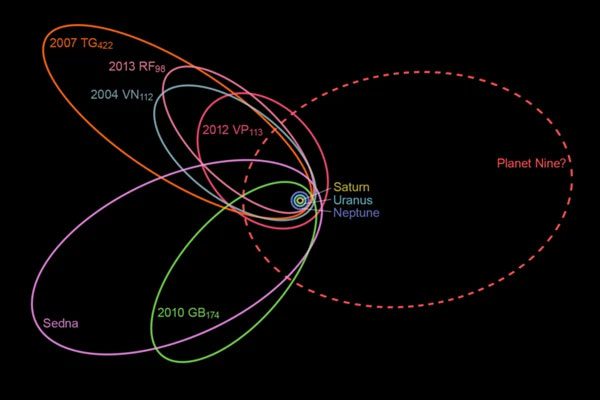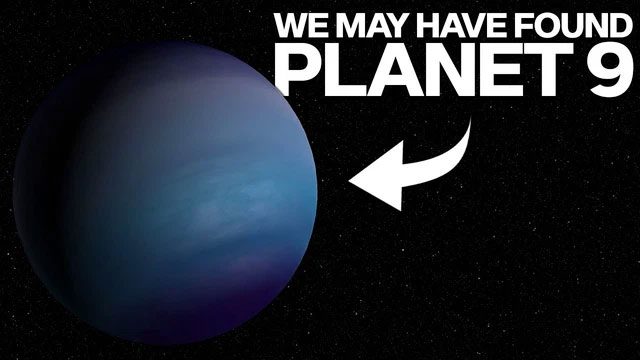Now, the astronomical community is getting closer to uncovering one of the greatest mysteries of recent decades – the existence of the ninth planet in the Solar System – a massive planet that may be orbiting in the far reaches of our Solar System.
Planet Nine is a hypothetical planet the size of Neptune. If it exists, this planet would orbit our Sun in a very long trajectory, farther than Pluto. In the most recent search for this mysterious object, Belyakov and his team at the Department of Physics and Astronomy at the University of Pennsylvania have ruled out a portion of the sky where this planet cannot exist, which has improved the odds of finding Planet Nine.

Scientists believe there is a ninth planet in our Solar System, which is ten times the size of Earth. Its exact location has yet to be confirmed, but its existence is supported by its gravitational effects on other objects.
In January 2015, a group of astronomers from the California Institute of Technology (Caltech) stumbled upon a potentially groundbreaking discovery. The alignment of several distant planets in our Solar System appears to have the same perihelion, or the point closest to the Sun. This suggests that a massive planet may be pulling them into these orbits, flinging them hundreds of times the distance between the Sun and Earth.
These observations hint at the existence of a planet similar in size to Neptune, and it may be located in a distant region where we have yet to detect it.
Caltech astronomers Konstantin Batygin and Michael Brown dubbed it Planet Nine. This hypothetical planet could have a mass ten times that of Earth and an orbit approximately 20 times farther from the Sun than Neptune, the eighth and farthest known planet from the Sun. According to NASA, Planet Nine could take between 10,000 to 20,000 Earth years to complete one orbit around the Sun.
While the scientific community is still debating whether Planet Nine exists, there is a consensus that we need to continue searching for this object, whether it is a planet in the Solar System or a massive, strange object lurking in the distance.

Planet Nine has a mass 10 times that of Earth and moves along a long orbit located at a distance 400 times greater than that between Earth and the Sun. The orbit of Planet Nine is likely also tilted by 15 to 25 degrees relative to the main orbital plane of the Solar System, where the other planets reside.
For the latest search efforts, the team of scientists behind the new research has shifted to a survey designed to uncover another cosmic mystery: dark energy.
The Dark Energy Survey (DES) is an international effort to map hundreds of millions of galaxies to reveal the nature of dark energy.
Belyakov stated: “The dark energy survey allows us to see objects that are over 100 times fainter than other surveys. Therefore, it provides us with a much deeper coverage, and we can rule out almost all of the potential candidates we previously proposed.”
The research team created 100,000 simulated objects that could be Planet Nine based on hypothetical models of its mass and distance. They then reviewed the data collected by DES to see how many of these 100,000 objects it would capture.
In this way, they were able to eliminate about 5% of the sky positions covered by DES, where these potential objects were not found. Although it currently exists as a hypothetical ninth planet, discovering a new planet would significantly change scientists’ understanding of how the Solar System formed.
The Solar System formed about 4.6 billion years ago, but scientists remain uncertain about the details of the formation of each planet and whether our solar system is unique in the universe.
Belyakov remarked: “The existence of Planet Nine, if confirmed, would greatly change our perception of how the outer regions of the Solar System operate. Once we confirm the existence of Planet Nine, the scientific community can make much more accurate predictions about the gravitational dynamics of the Solar System.”

The idea of the existence of this new planet was proposed in 2014-2015 and quickly gained popularity in the astronomical community. This speculation is based on the patterns of objects in a debris ring in the outer belt known as the Kuiper Belt. It has been observed that the objects here cluster together in a manner similar to the presence of gravitational forces from a large object. Since this discovery, astronomers have been trying to find more evidence supporting the existence of the ninth planet in the Solar System. However, our limited understanding of the Kuiper Belt is what prevents us from confirming this planet’s existence with certainty.





















































